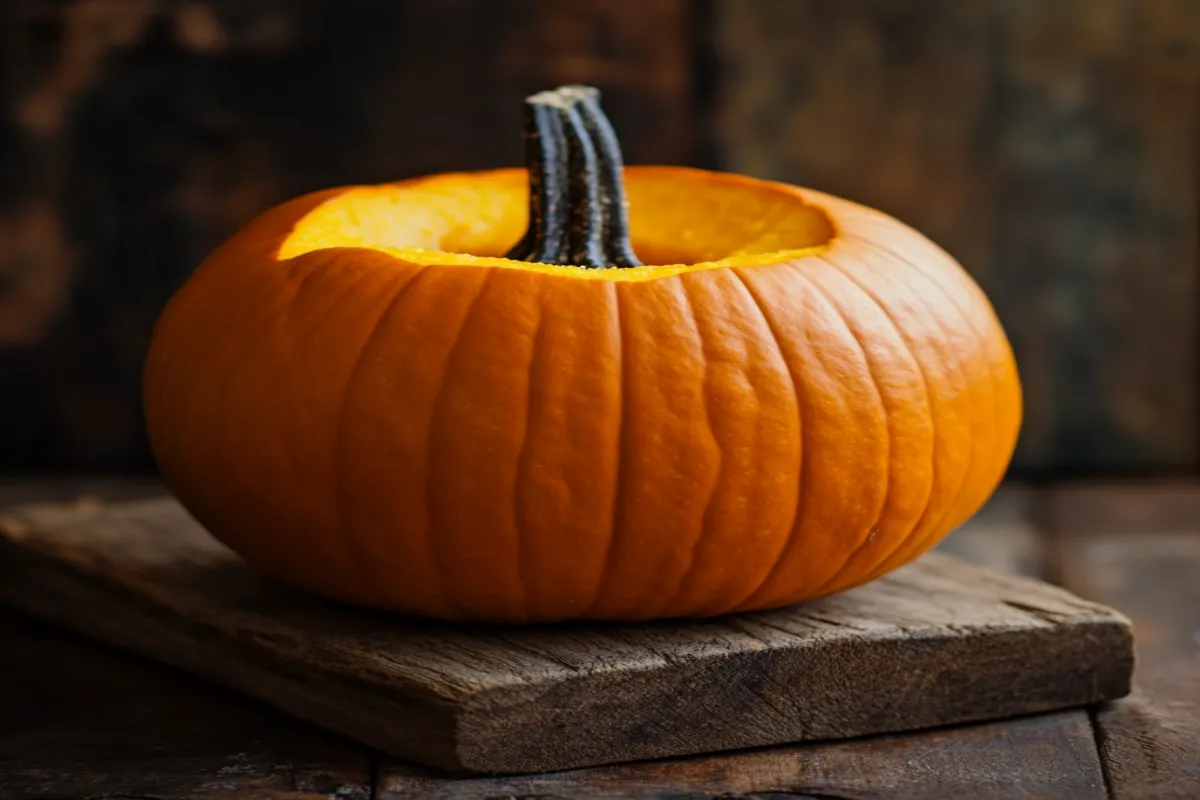Pumpkin is a beloved ingredient, especially during the fall and holiday season. As a versatile ingredient, it enhances both sweet and savory dishes, adding warmth and nutrients that make recipes both healthy and comforting. Whether you’re making pies, soups, or smoothies, pumpkin brings a delightful depth to any dish. However, there’s often confusion between canned pumpkin and pumpkin puree, so understanding the differences can help you make better choices in the kitchen. Are they the same? Can they be used interchangeably? This article explores their differences to help you choose the best option for your recipes.
What is Canned Pumpkin?

Canned pumpkin consists of processed pumpkin, typically containing only pumpkin without added ingredients. Prepared for consistency, it provides a convenient solution for many baking and cooking needs. Producers make it from specific pumpkin varieties, often called “sugar pumpkins” or “pie pumpkins,” known for their rich, consistent texture. During canning, manufacturers steam, mash, and can the pumpkin, creating a shelf-stable product for easy use.
Popular brands like Libby’s and Farmer’s Market Organic offer canned pumpkin, available year-round in most grocery stores. Because of its consistency, it is ideal for recipes that need pumpkin flavor without the time-consuming process of preparing fresh pumpkin.
What is Pumpkin Puree?

Pumpkin puree refers to pureed pumpkin, which can be either homemade or store-bought. Additionally, it offers flexibility in flavor intensity and texture. When made at home, the process involves roasting, mashing, and blending fresh pumpkin until it reaches a smooth texture. Unlike canned pumpkin, which is immediately ready to use, homemade pumpkin puree varies in consistency and flavor, depending on the pumpkin type and preparation method.
Making pumpkin puree at home allows for greater control over flavor and freshness. Furthermore, it gives you the option to avoid preservatives often found in store-bought products. If you’re interested, try making your own by following this step-by-step guide to homemade pumpkin puree.
Key Differences Between Canned Pumpkin and Pumpkin Puree
Ingredients and Composition
- Canned Pumpkin: Contains 100% pumpkin without additives.
- Pumpkin Puree: Can be made at home, with texture variations based on the pumpkin variety.
Processing
- Canned Pumpkin: Steamed and mashed during production, ensuring a consistent product.
- Pumpkin Puree: Involves roasting or steaming fresh pumpkins at home, which allows flavor customization but may vary in texture.
Color, Texture, and Taste
- Canned Pumpkin: Generally uniform in color, smooth in texture, with a mild flavor.
- Pumpkin Puree: The color and texture vary with the type of pumpkin used, often providing a fresher, more natural taste.
Nutritional Value
Both canned pumpkin and homemade puree offer vitamins A, C, and fiber, along with low-calorie benefits, making them excellent choices for health-conscious cooks. To learn more about pumpkin’s nutritional benefits, visit Nutritional Benefits of Pumpkin.
Pros and Cons of Canned Pumpkin
Pros
- Convenience: No preparation is necessary.
- Long Shelf Life: Stores well for extended periods.
- Consistent Quality: Texture and flavor are uniform.
Cons
- Potential Additives: While often pure, some brands may add preservatives.
- Less Freshness: Lacks the fresh taste found in homemade puree.
Pros and Cons of Pumpkin Puree
Pros
- Fresh Taste: Homemade puree brings a fresher taste.
- Ingredient Control: No additives or preservatives.
- Customizable Texture: Adjust texture based on preference.
Cons
- Labor-Intensive: Preparation takes time and effort.
- Shorter Shelf Life: Homemade puree requires refrigeration and does not last as long as canned.
How to Make Pumpkin Puree at Home
Making pumpkin puree is straightforward but requires a bit of effort. Here’s how:
Ingredients:
A sugar pumpkin, olive oil, and salt (optional).
Step-by-Step Instructions:
- First, preheat the oven to 375°F.
- Next, cut the pumpkin in half, remove the seeds, and brush with olive oil.
- Then, roast for 45-60 minutes until tender.
- Finally, scoop out the flesh and blend until smooth.

Common Substitutions and Usage in Recipes
While canned pumpkin and pumpkin puree are often interchangeable in recipes, understanding their distinct properties can make a significant difference in achieving the desired outcome. Here are a few substitution tips:
- Adjust Texture: Homemade puree may require draining excess moisture.
- Flavor Impact: Fresh puree often provides a richer flavor.
Expert Tips for Choosing Between Canned Pumpkin and Pumpkin Puree
- For pies, canned pumpkin is ideal for consistency.
- For soups and smoothies, homemade puree may offer a fresher taste.
- For time constraints, canned pumpkin provides added convenience.
FAQ Section
Can You Substitute Canned Pumpkin for Pumpkin Puree?
Yes, these options are often interchangeable. Adjust the consistency if needed.
Is Canned Pumpkin Really 100% Pumpkin?
Most brands use 100% pumpkin, typically a blend of different pumpkin varieties.
What is the Best Type of Pumpkin to Use for Homemade Puree?
Sugar pumpkins, also known as pie pumpkins, are best for sweetness and texture.
How Can You Tell if Pumpkin Puree is Fresh?
Fresh pumpkin puree should appear bright in color and have no sour smell.
Can Pumpkin Puree Be Frozen for Later Use?
Yes, freeze pumpkin puree for up to 3 months.
Popular Recipes for Canned Pumpkin vs. Pumpkin Puree
Recipes for Canned Pumpkin
- Pumpkin Pie: Canned pumpkin’s consistency suits pie filling perfectly.
- Pumpkin Bread: Its uniform texture holds well during baking.
Recipes for Pumpkin Puree
- Pumpkin Soup: Fresh puree brings a rich, natural flavor.
- Pumpkin Muffins: Homemade puree enhances a deeper pumpkin taste.
Conclusion
Whether you choose canned pumpkin or pumpkin puree, each has distinct benefits. Selecting the right option depends on your recipe, time, and personal taste preferences. Canned pumpkin provides convenience and consistency, while pumpkin puree offers control and freshness. Both options are excellent, and your decision depends on the recipe, time, and desired flavor profile.
Experimenting with both helps determine which works best for your dishes, allowing you to enjoy the comforting taste of pumpkin in every bite.

